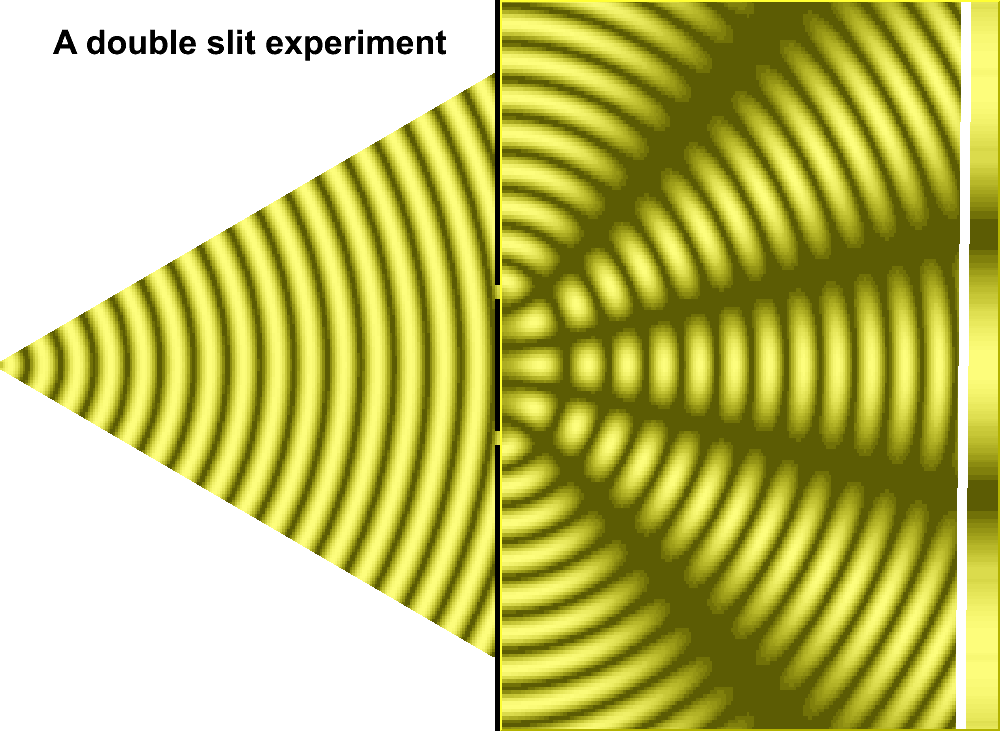Electromagnetic Wave
From what we learned from the section on "Electromagnetism", we know that: 1) a changing electric field should create a magnetic field, and 2) a changing magnetic field can create an electric field.
An electromagnetic wave is a combination of electric and magnetic fields that vibrate together in space and time in a synchronous fashion and propagate through space (even vacuum) at the speed of light.
The electromagnetic wave is a transverse wave.
The electric and magnetic fields oscillate in the direction perpendicular to the direction of propagation.
The EM wave propagates because the electric field recreates the magnetic field and the magnetic field recreates the electric field.
Doppler Effect for Electromagnetic Waves
Electromagnetic waves also experience the Doppler effect. As with sound, motion towards corresponds to a frequency shift upward and a wavelength shift downward, and motion away corresponds to a frequency shift downward and wavelength shift upward (the so-called red-shift).
For example, suppose we observed the light from a distant galaxy is received on Earth with a wavelength of 650nm. But it is known that the wavelength of this light upon emission was 625nm. Then we should know that this galaxy is receding from Earth.
Light as Electromagnetic Wave
Light is an electromagnetic wave –has both electric and magnetic parts and does not require a medium. A medium is any physical substance through which energy can be transferred. There are different types of electromagnetic waves, depending on their frequency levels and energy levels. Electromagnetic waves are formed when an electric field (shown as blue arrows) couples with a magnetic field (shown as red arrows). The magnetic and electric fields of an electromagnetic wave are perpendicular to each other and to the direction of the wave. Electromagnetic Waves have different wavelengths. When you listen to the radio, watch TV, or cook dinner in a microwave oven, you are using electromagnetic waves. Radio waves, television waves, and microwaves are all types of electromagnetic waves. They differ from each other in wavelength. Wavelength is the distance between one wave crest to the next.

Index of Refraction
In optics, the refractive index or index of refraction of a material is a dimensionless number that describes how light propagates through that medium. It is defined as
where c is the speed of light in vacuum and v is the phase velocity of light in the medium. For example, the refractive index of water is 1.333, meaning that light travels 1.333 times faster in vacuum than in the water.
Snell's Law
Snell's law is a formula used to describe the relationship between the angles of incidence and refraction, when referring to light or other waves passing through a boundary between two different isotropic media, such as water, glass, or air.
Where n1 and n2 are the index of refraction of the 2 media. We can rewrite above Snell's law as:
n1sinθ1 = n2 sinθ2

Total Internal Refraction
When the angle of refraction θ2 > 90°, total internal refraction will occur, ie, light will be 100% internally refracted within the same media. For this to happen, the critical angle of incidence θc must meet the following condition:
sinθc = n2 / n1 where n2 < n1
Let's prove it from Snell's law:
1. n1sinθ1 = n2 sinθ2
2. when θ2 = 90°, sinθ2 = 1
3. n1sinθ1 = n2 sinθ2 = n2 * 1 = n2
4. sinθ1 = n2 / n1
Double-Slit Interference

In above double-slit interference diagram, we have:
Ym = mλL/d, where m =0, ±1, ±2, ±3, ..., corresponding to the successive constructive interference points in the above diagram
We can also have m * λ = dsinθ, assuming Ym/L is approximately equal to sinθ (this happens when θ is very small).
NOTE:
- The point of constructive intereference at m=0 has the greatest intensity (called central maximum), at m=±1 has lower intensity, and at m=±2, ±3, ... has lower and lower intensity.
- You can also have more than 2 slits in the barrier before the screen for the interference experiment. And in that case, the interference pattern will become sharper - the distinction between dark and bright spots become more pronounced. Barriers containing thousands of tiny slits per centimeter - called diffraction gratings - are used precisely for this purpose.
- You can also have only 1 slit in the barrier before the screen. In that case, the central maximum will be wider and brighter.
